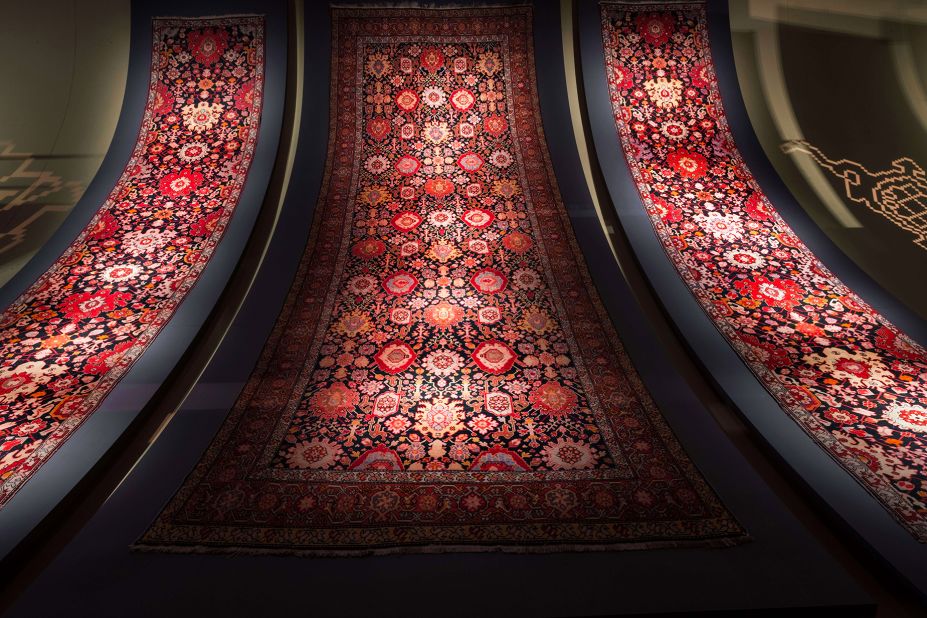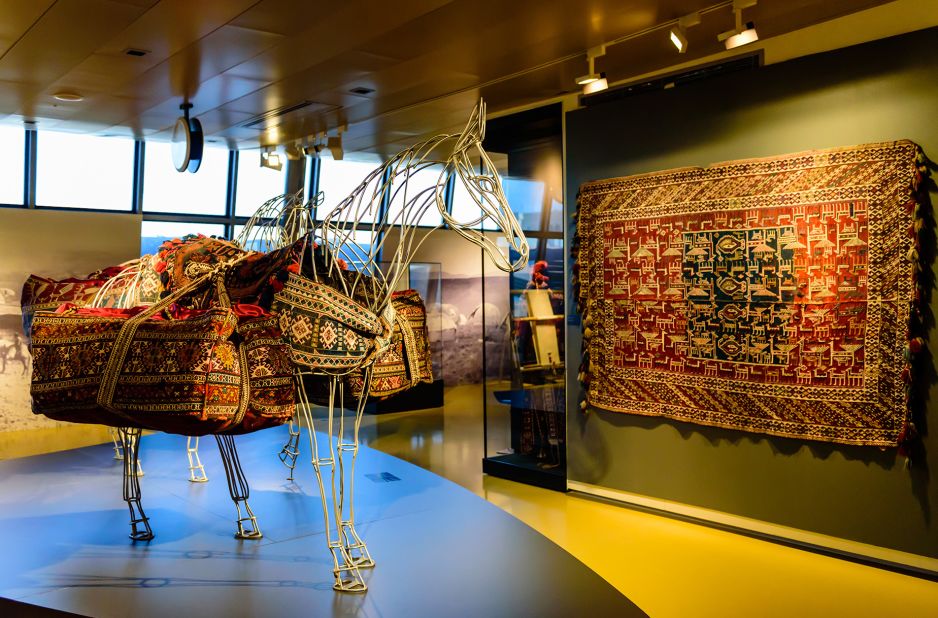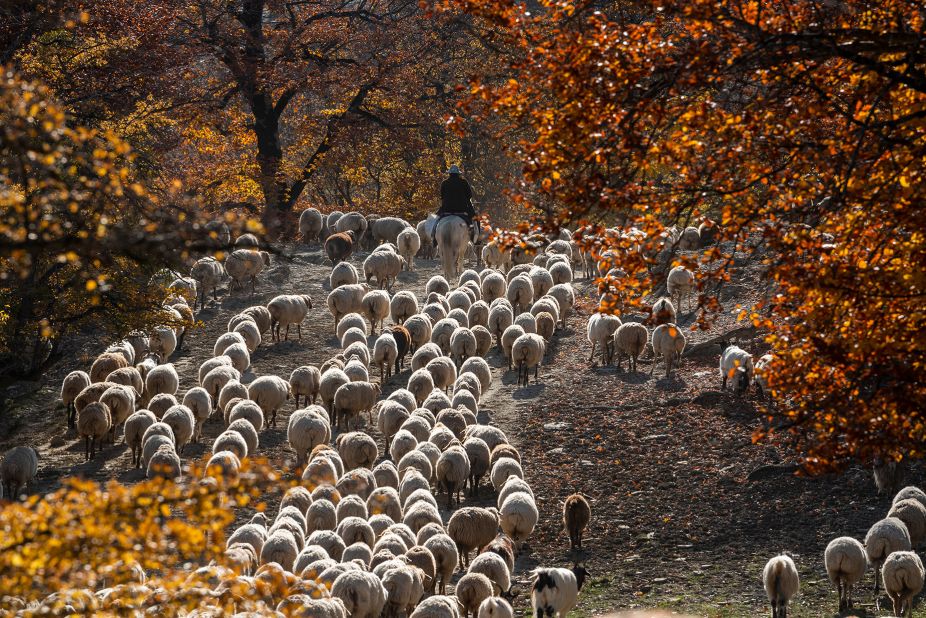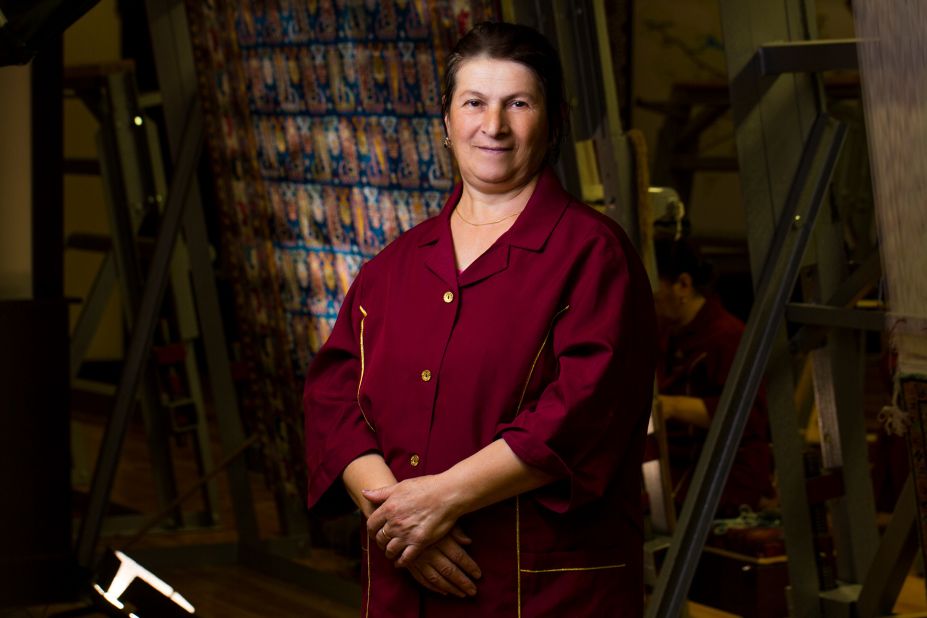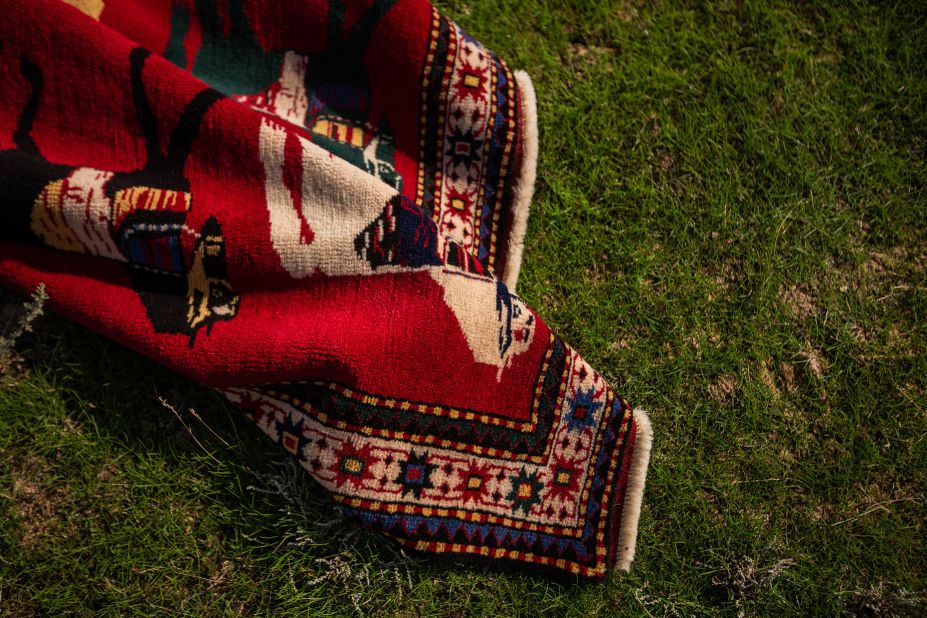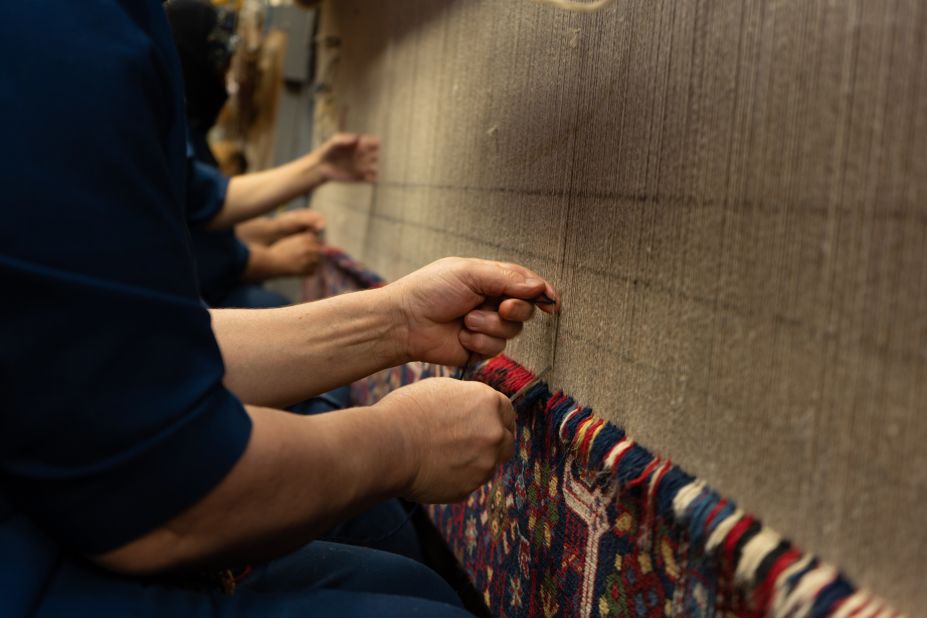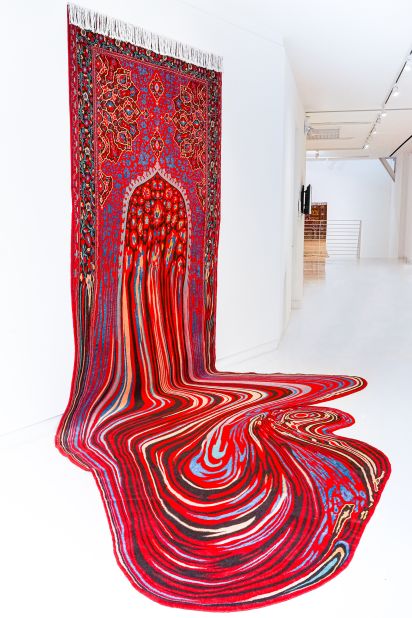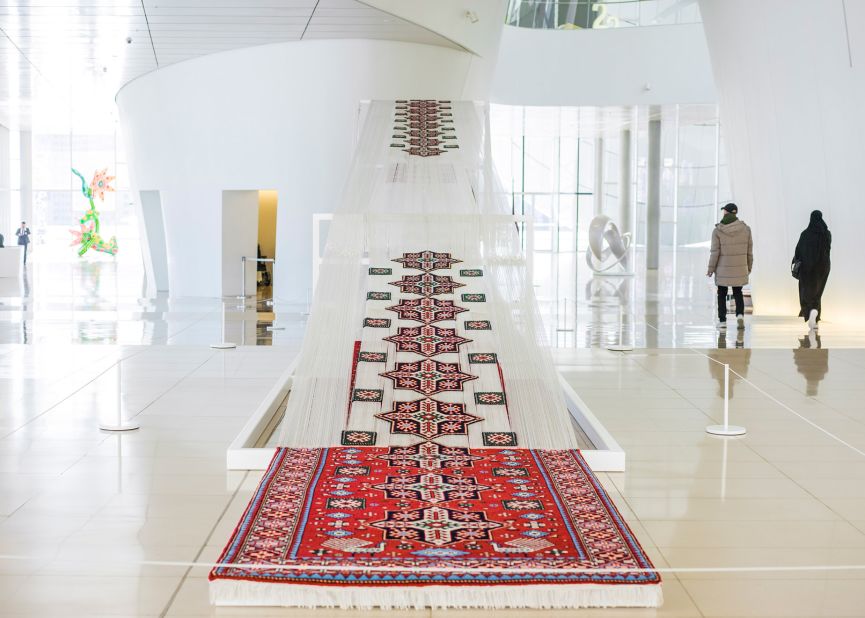Editor’s Note: This CNN Travel series is, or was, sponsored by the country it highlights. CNN retains full editorial control over subject matter, reporting and frequency of the articles and videos within the sponsorship, in compliance with our policy.
For some, home is where the heart is. In Azerbaijan, however, the saying goes, “xalçam harada, yurdum orada,” meaning “wherever my carpet is, that’s where I live.”
Azerbaijan’s love affair with carpets is an inextricable one — a much-revered art form that’s been woven into its cultural DNA since the Bronze Age and fervently preserved thereafter. Today, carpets are an intrinsic part of daily life.
They are found everywhere: on the walls and floors of homes and restaurants, displayed in heaps outside souvenir shops and strewn over bonnets of rusty Ladas parked roadside. Some are woven for special occasions: births, weddings, birthdays and burials.
Weaving techniques are passed down from generation to generation — and each carpet has a unique story to tell. They’re such an artistic phenomenon that in 2010, UNESCO inscribed traditional Azerbaijani carpet weaving onto the Representative List of the Intangible Cultural Heritage of Humanity.

In the country’s capital, Baku, the beloved carpet’s most striking embodiment comes in the form of a building shaped, rather remarkably, like a gargantuan, half-rolled carpet decorated with a golden geometric pattern. The Azerbaijan National Carpet Museum, designed by Austrian architect Franz Janz, sits proudly on the city’s buzzy seaside promenade.
Its three floors house a kaleidoscope of Azerbaijani carpets — modern and traditional, pile and flat-woven, small and larger-than-life — as well as textiles, ceramics, jewelry and traditional costumes. The 6,000 or so carpets, dating from the 17th century to the present day, hail from different regions across the country, from the shores of the Caspian Sea to the hinterlands of mountainous Karabakh.
The museum was founded in 1967 by renowned artist and carpet weaver Latif Karimov, who dedicated his life to celebrating and preserving Azerbaijani carpets. It was, at the time of opening, the very first museum of its kind. It has been standing in its current location since 2014 and serves as a vital research and education center.
A short distance from the museum, in Baku’s UNESCO-listed Old City, is Azerkhalcha, an organization dedicated to preserving the age-old tradition of carpet weaving and championing the women who devote their lives to it. One of them is 61-year-old Sevinj Hajiyeva, who was taught how to weave by her brother when she was just 6.
“Carpet weaving is not just an art; it’s a profound passion, a source of love, and a lifelong companion,” she tells CNN. “My greatest aspiration is to pass on this art to the younger generation.” For Sevinj, weavers in Azerbaijan often share emotions and ideas through carpets, “treating them as cherished creations akin to their own children.”
Maleyka Abdullayeva and Najiba Panahova both work at Azerkhalcha’s workshop in Ismayilli, a region in the north of Azerbaijan. Maleyka has dedicated three decades of her life to carpets, and for her, weaving isn’t just a craft, but an “appreciation for one of the world’s greatest beauties”, she says. And Najiba was only 14 when her mother taught her how to weave — that’s when she was “captivated by the enchanting dance of loops.”
Wildly intricate
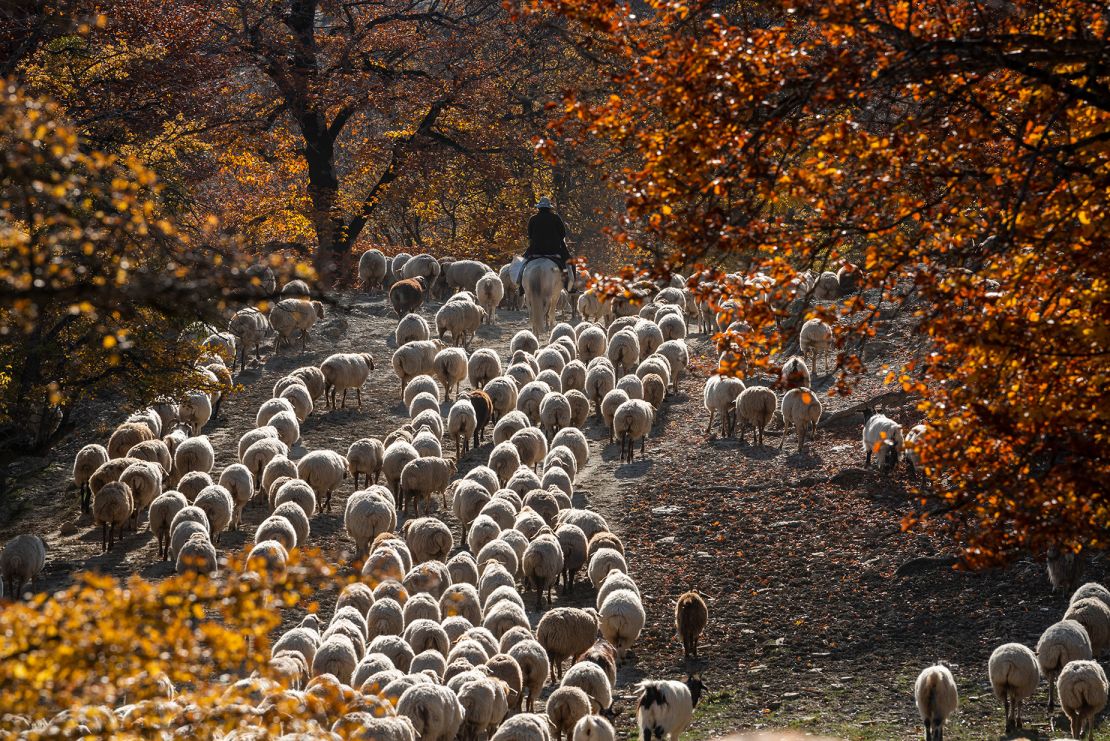
When you look back in history, Azerbaijani carpets have long reached far and wide. They were eulogized in the “Book of Dede Korkut,” which some trace back to the 10th century, making it one of the oldest surviving pieces of Turkish literature.
It’s believed that the Arab traveler Al-Muqaddasi, also from the 10th century, visited Azerbaijan, noting that “their carpets have no equals in the world.” Even ancient Greek historians Herodotus and Xenophon, as well as famous Italian explorer and writer Marco Polo, wrote about the Azerbaijani carpet’s significance in their works.
The two types of carpets in Azerbaijan, flat weave and pile weave, are divided into four categories, depending on their region of origin: Guba-Shirvan, Ganja-Gazakh, Karabakh and Tabriz.
Most of them are made using wool from either lambs or sheep, while the silk kind is crafted exclusively in Sheki, the only silk-producing region in the country. Flat-weave carpets come in eight types, depending on their motifs, composition, weaving method and colour: palas, jejim, ladi, kilim, shadda, varni, zili and soumak.
The most popular among Azerbaijanis are kilim and soumak, which are distinguished by bold, geometric patterns and flat woven on a loom with warp threads. Of these two types, the kilim has the same pattern on both sides and is thinner.
Some of Azerbaijan’s best-known ancient designs include Pirabadil from Guba, Verneh from Karabakh and Surakhani from Shirvan. The Ardabil Carpet — one of the oldest dated carpets in the world — is believed to have been created in Tabriz, an Azerbaijani-speaking city in Iran’s East Azerbaijan Province.
When it comes to the process of creating the carpet, it’s a wildly intricate and time-consuming one.
First, the sheep is reared for its wool — this is usually done during spring or autumn — which is then washed, spun and dyed before the yarn is woven in either horizontal or vertical looms. Natural, ancient dyeing techniques are still the most favourable in Azerbaijan. They are extracted from plants, fruits and vegetables, such as red onion, saffron, nut shells and pomegranates. These age-old techniques have vehemently stood the test of time.
Breaking traditions
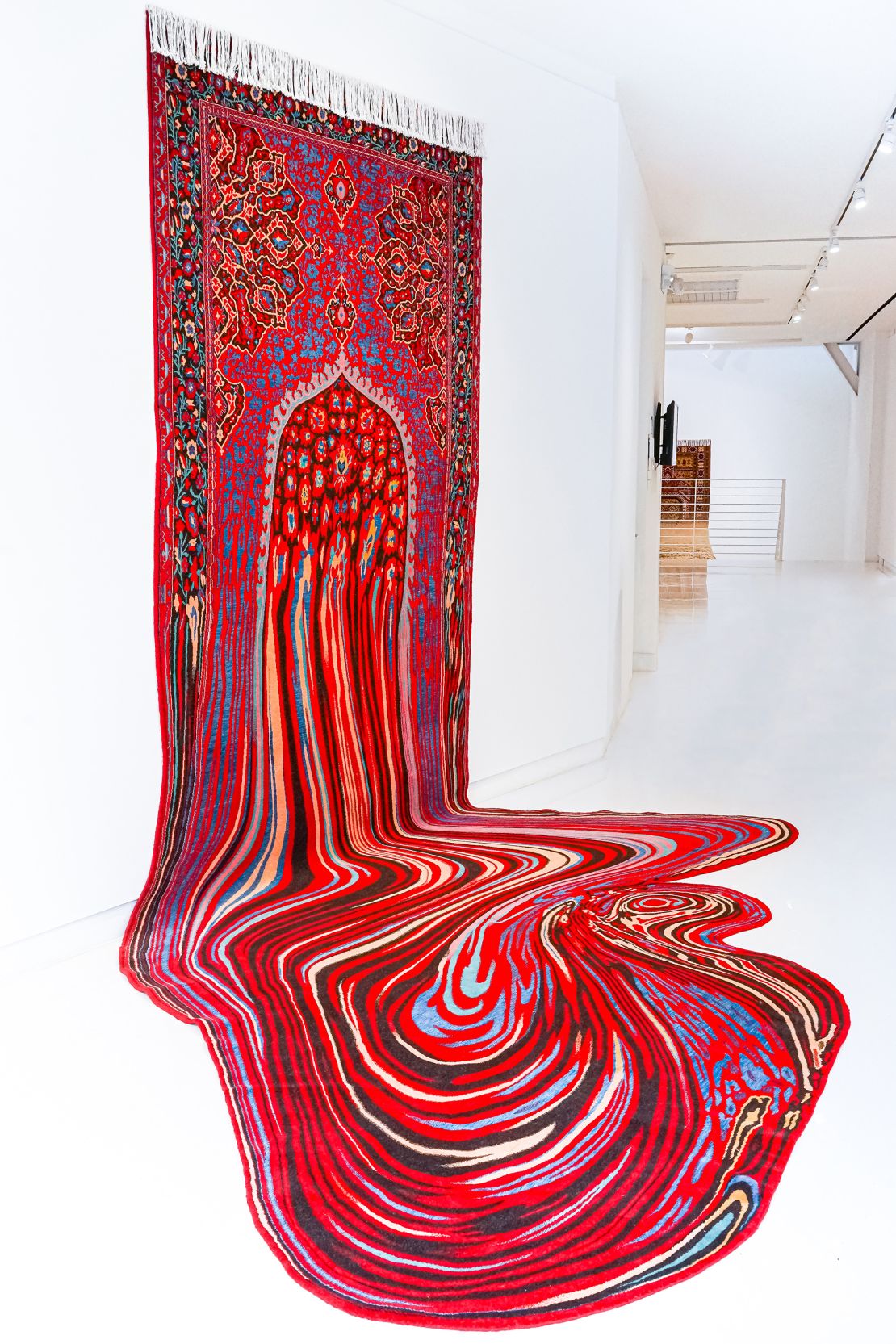
But it’s not all about the past and unyielding tradition. One Azerbaijani artist, Faig Ahmed, is known for deconstructing typical carpets and “defiling” them with new, three-dimensional patterns, quite literally interthreading traditional styles with overtly abstract, almost psychedelic patterns.
Ahmed, who was born in Sumqayit but now lives and works in Baku, has exhibited his unique designs all over the world, including New York, Paris and Mumbai, to name a few.
He represented Azerbaijan at the Venice Biennale in 2007, and in 2013 was shortlisted for the Jameel Prize 3 in London’s Victoria and Albert Museum.
It all started with a carpet passed down from his great-grandmother. As a preschooler, he became incredibly familiar with its intricate, vivid patterns as well as the imperfections that come with a hand-crafted carpet. One day, he started cutting these patterns out. He might have damaged an important family heirloom, but it was the birth of an artist like no other.
“For me, as an Azerbaijani artist, the carpet represents a localized artistic language through which one can express global themes,” Ahmed tells CNN Travel. “In Azerbaijani culture, a carpet represents a multilayered connection of history, tradition, social norms, religion, politics and geography. This signifies a deep-rooted link between Azerbaijan’s geography and culture.”
Carpets in Azerbaijan are also a strong symbol of family life, Ahmed says. In some villages, newlyweds receive a carpet to mark the beginning of a new union. And in traditional funeral ceremonies, the body is wrapped using a “specially woven carpet of elongated form with a symbolically empty (without patterns) center.”
And, despite the warped and conceptual nature of his designs, the types of knots Faig uses are “exactly the same as those used thousands of years ago — like the Pazyryk rug dating back 2,500 years, from Altai,” he says.
“However, because I’m introducing complex elements into this ancient form of weaving, it’s necessary to develop new techniques and methods.”
Today, the preservation of carpet weaving is so important to Azerbaijan that it is taught in some universities and colleges across the country. The Azerbaijan State University of Culture and Arts in Baku, for example, offers a bachelor’s degree in Decorative, Applied Art (carpet, weaving).
For tourists, there are carpet weaving workshops all around the country, including the Qadim Quba in Azerbaijan’s northern Quba region. And, with the likes of Faig Ahmed and Azerkhalcha — who are at once preserving ancient traditions and propelling them into the 21st century — it’s safe to say carpets will remain firmly stitched into the tapestry of Azerbaijani culture for generations to come.
Editor’s Note: Farida Zeynalova is a travel journalist originally from Baku, Azerbaijan. She’s the author of Berlitz Pocket Guide Baku and assistant editor of Food by National Geographic Traveller (UK).
